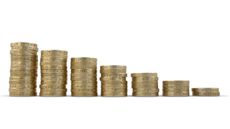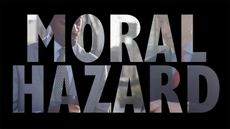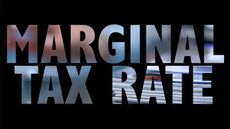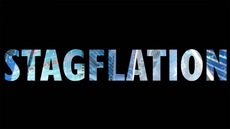High earners to pay nearly £2000 more in tax due to fiscal drag
The government froze tax thresholds, which will drag employees into higher tax bands as wages rise with inflation. We explain what fiscal drag is, and how to avoid it.

The new tax year has begun, which means the frozen tax thresholds announced by chancellor Jeremy Hunt in his Autumn Budget have come into effect.
Hunt had two options In order to stabilise the UK’s finances following the chaos unleashed by the mini-Budget – he could either cut spending or hike taxes.
He did both, and now he’s relying on an economic principle called “fiscal drag” to help him balance the books.
Subscribe to MoneyWeek
Subscribe to MoneyWeek today and get your first six magazine issues absolutely FREE

Sign up to Money Morning
Don't miss the latest investment and personal finances news, market analysis, plus money-saving tips with our free twice-daily newsletter
Don't miss the latest investment and personal finances news, market analysis, plus money-saving tips with our free twice-daily newsletter
Fiscal drag is the “ultimate stealth tax”, says Alice Guy. head of pensions and savings at interactive investor. “It often flies under the radar as our taxes are calculated by our employer.
“Few of us remember to check our tax thresholds, and we would be much more likely to notice a rise in income tax rates than a freezing of tax thresholds.”
Calculations by interactive investor lay bare the impact of fiscal drag – tax bills for both high-rate and basic-rate taxpayers are increasing by thousands of pounds.
We explain what fiscal drag is, and what it means for your finances.
What is fiscal drag?
Fiscal drag is all about how tax thresholds interact with inflation. It’s a great way of essentially raising taxes without telling anyone you’re raising taxes.
In a progressive tax system like Britain’s, most taxes have different bands at which you pay different rates of tax.
The more money you make, the more of it you pay in tax.
For example, in the 2022-2023 tax year, people living in England, Northern Ireland and Wales who earn less than £50,000 a year, pay a maximum income tax rate of 20%. After that, it goes up to 40%, and eventually to 45%.
Now, in a typical year, most people get some sort of increase in their wages, linked to the cost of living. This is not a pay rise as such – it just means that your wages are keeping up with inflation. Partly due to inflation and partly due to economic growth, wages in the UK for full-time employees have risen from £406 a week to £533 a week on a median basis over the past decade.
Wage growth accelerated over the last few months, and even though the latest data from the Office for National Statistics showed the rate of growth has slowed down, it remains high.
Growth in regular pay in the private sector, excluding bonuses, was 6.5% from November to January.
Despite this increase in wages, the government is keeping the bands at which you pay different rates of tax static until 2028 at the earliest.
How will fiscal drag impact your finances?
As a result, some workers who previously only paid the basic rate in tax will end up paying the higher rate – even though their wages haven’t risen in “real” terms (that is, after inflation). While some workers who’ve never paid taxes may have to start paying.
The following calculations show how much more tax earners on different incomes would see their tax increased, assuming wages rise in line with OBR forecast inflation by the end of 2023/2024 and then by 2%.
Those earning £15,000, £20,000 and £30,000 will see their income rise by 21% based on the assumptions above.
But their tax bills will increase by 106%, 50% and 33% respectively. This would add £861 to these earners’ tax bills.
Meanwhile, high earners on over £50,000 would see a 35% increase in their tax and a 21% increase in wages – adding a whopping £1,905 to their tax bill.
“We often think about fiscal drag affecting high earners as frozen thresholds mean more are pushing into the higher rate tax band,” says Guy. “But fiscal drag actually affects low earners more as they pay no tax on a large part of their income meaning that the level of tax thresholds has a huge impact on their tax bill.”
Is there a way to avoid fiscal drag?
If you want to minimise the chances of moving into a higher tax bracket, you might want to take a look at the new pensions allowances.
Jeremy Hunt announced a series of increases to pensions allowances, including abolishing the lifetime allowance, in a bid to persuade people to remain in work.
“If you can afford it then the best way to avoid paying more tax is by paying more into your pension,” says Guy. “Pension saving is tax-free in the UK, and the government will top up your pension payments, so it only costs £80 to pay in £100 if you’re a basic rate taxpayer and £60 to pay in £100 if you’re a higher rate taxpayer.”
Investors should also consider moving their investments into an ISA, as they are facing cuts to the amount they can receive tax-free in dividends and capital gains.
This can be done via a Bed and ISA process. “Savvy individuals will use the new tax year to shelter savings using their £20,000 ISA allowance for 2023/24, as well as the newly increased £60,000 pension annual allowance,” said AJ Bell.
Nic studied for a BA in journalism at Cardiff University, and has an MA in magazine journalism from City University. She joined MoneyWeek in 2019.
-
-
 Investment trust discounts hit 2008 levels. Here’s how to profit
Investment trust discounts hit 2008 levels. Here’s how to profitInvestment trust discounts have risen to levels not seen since 2008, here are three trusts looking to buy to profit.
By Rupert Hargreaves Published
-
 A luxury stock to buy at a high street price
A luxury stock to buy at a high street priceInvestors wrongly consider Watches of Switzerland a high-street outlet.
By Dr Matthew Partridge Published
-
What is an investment trust?
Videos “Active” investment funds come in two main varieties, one of which is investment trusts. But what exactly is an investment trust?
By Rupert Hargreaves Published
-
 What is a dividend yield?
What is a dividend yield?Videos Learn what a dividend yield is and what it can tell investors about a company's plans to return profits to its investors.
By Rupert Hargreaves Published
-
 What is a deficit?
What is a deficit?Videos When we talk about government spending and the public finances, we often hear the word ‘deficit’ being used. But what is a deficit, and why does it matter?
By moneyweek Published
-
 Too embarrassed to ask: what is moral hazard?
Too embarrassed to ask: what is moral hazard?Videos The term “moral hazard” comes from the insurance industry in the 18th century. But what does it mean today?
By moneyweek Published
-
 Too embarrassed to ask: what is contagion?
Too embarrassed to ask: what is contagion?Videos Most of us probably know what “contagion” is in a biological sense. But it also crops up in financial markets. Here's what it means.
By moneyweek Published
-
 Too embarrassed to ask: what is a marginal tax rate?
Too embarrassed to ask: what is a marginal tax rate?Videos Your marginal tax rate is simply the tax rate you pay on each extra pound of income you earn. Here's how that works.
By moneyweek Published
-
 Too embarrassed to ask: what is stagflation?
Too embarrassed to ask: what is stagflation?Videos Traditionally, economists and central bankers worry about inflation or recession. But there is one thing worse than both: stagflation. Here's what it is
By moneyweek Published
-
 What is pension drawdown?
What is pension drawdown?Videos Pension drawdown is a way of taking cash out of your pension pot and funding your lifestyle in retirement. But how does it work and is it the best option for you?
By Tom Higgins Last updated








